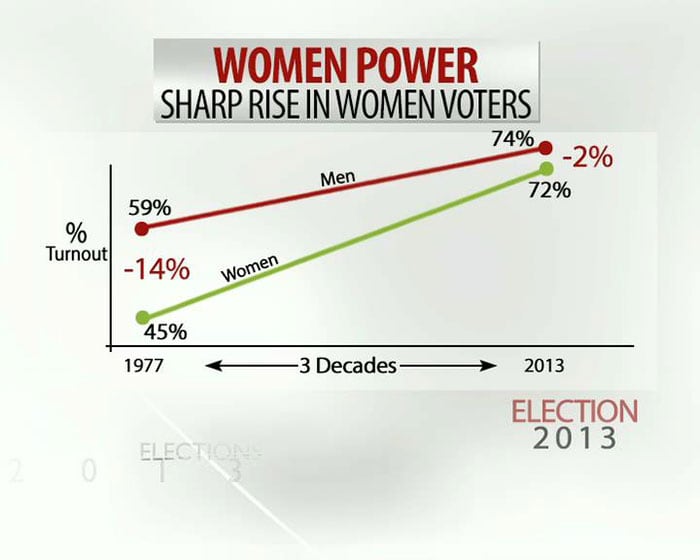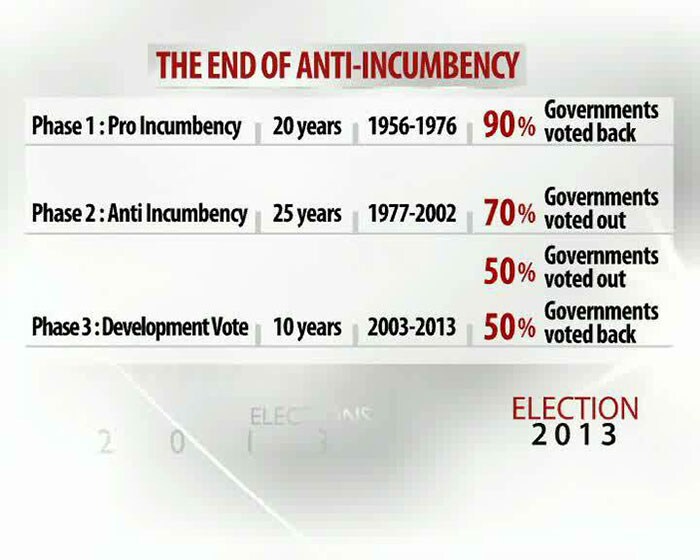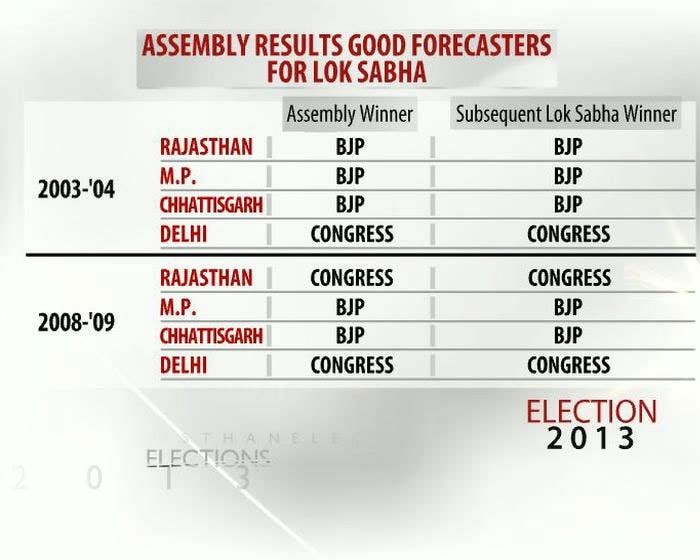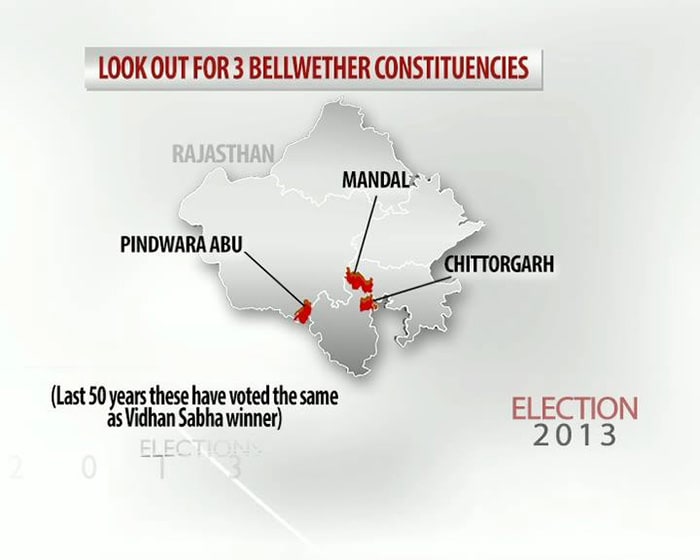Five new rules of Indian elections
As the counting of votes begins for the closely-watched Assembly elections in four states - Delhi, Madhya Pradesh, Rajasthan and Chhattisgarh - we take a look at the five new factors that have emerged in Indian elections.
-
As the counting of votes begins for the closely-watched Assembly elections in four states - Delhi, Madhya Pradesh, Rajasthan and Chhattisgarh - we take a look at the five new factors that have emerged in Indian elections.
72 per cent of women vote now as compared to 45 per cent three decades ago. Now, they are only 2 per cent behind men.










